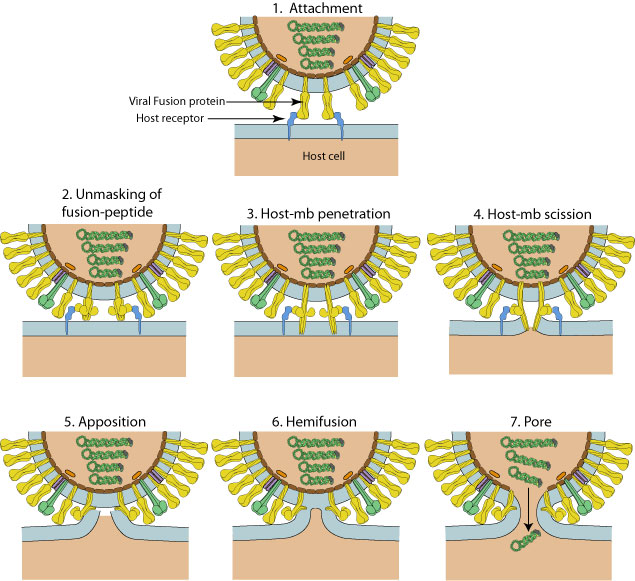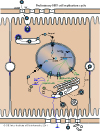HBV membrane fusion
The virus-host membrane fusion process would occur in endosomes, but would not be pH dependent for DHBV (Kock et al. 1996) Rating=1. Some studies predict the n-terminus of S have a fusogenic property (Nunez et al. 2009) Rating=1
Another model suggest that the pre-S2 motif would allow the translocation of HBV particles through the endosomal membrane into the cytosol (Stoeckl et al. 2006) Rating=0, but this model is controvertial (lepere et al. 2007) Rating=2
Comment:
Viral fusion proteins need to be activated in order to function at the right moment in the virus cycle. The trigger can be receptor/co-receptor binding, leading to fusion at the plasma membrane, or endosomal low pH-dependent activation,leading to fusion in the endosome. Since HBV is entering the cell through caveolae endocytosis, the second mecanism is probable.
HCV for example enters through clathrin-dependent endocytosis, and has a fusion activation pH-dependent. (Sanchez san-martin et al. 2006) Rating=2
All known viral fusion proteins are active in the form of a trimer, we can expect HBV Surface proteins to do the same.
global mecanism of fusion:



